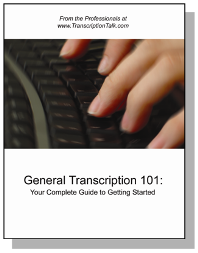Now that you've got a handle on where your finances stand currently, it's time to consider how you can prepare for working from home and budgeting with a variable income. I've written previously about realistic income expectations for transcription, and Mandi has given us a great chart that provides us with pricing structures, so you can refer to those for some information on the income potential that general transcription has.
But how do you really know if you can earn enough to be able to stay home? Well, quite frankly, you probably can't be 100% positive. It's going to be somewhat of a leap of faith, so first and foremost you have to have confidence in yourself and your abilities. But beyond that there are a few steps that you can take to pave the way and make the transition a little easier.
1.) Look at ways you can cut back or save money by working from home. This is the time to be ultra realistic. You may have to make some tough decisions, but you just have to weigh them against how much it means to you to be able to stay at home. For example, if you're a two-car family currently, you may be able to cut back to just one car. Think of the savings to be had by eliminating a car payment, insurance, maintenance, fuel, etc. Other areas that you can cut out of your current budget are business attire, lunches on the go, office gifts, and possibly even daycare.
2.) Try to secure one or more contracts before leaving your current position. Try taking on some transcription work in the evenings or over the weekends to hone your skills and get a better handle on the kind of income that you personally can earn. Not only will this trial period help you increase your speed and get comfortable with being an independent contractor, but you'll get a better feel for how much work you can anticipate from the companies you're working with and determine whether you need to seek out additional contracts before you take the plunge.
3.) Finally I highly recommend setting up an emergency fund. Consider using the earnings from your trial period to build a backup fund for when you fail to meet your budget in a given month. You will have to make the determination as to what you feel comfortable with as a backup. The key to really making it work is that on months when you exceed the amount you need for your budget, you need to be disciplined in depositing the additional funds back into your emergency account.
I find that what really helps me stay disciplined about my emergency fund is to keep it in an online savings account. This serves two purposes. First, it's not as simple to just transfer over the money immediately or to withdraw it at the ATM as it is with a local account, and second, they tend to have much higher interest earnings than a traditional account. I personally like FNBO Direct for this purpose. They offer a 3.5% APR currently, no monthly fees, no minimum balances, and you can open an account with as little as $1.
I truly believe that by following these three steps you can help mitigate some of the anxiety of making the transition from working outside the home to working from home. Being prepared for fluctuations in your monthly income is half the battle!
Next up in the series I'll offer some additional tips on how you can stretch your budget to allow you some extra wiggle room in your endeavor to work at home. If you want to get a head start though, check out my other blog, Deal Seeking Mom, for lots of great money-saving suggestions!
Saturday, October 4, 2008
Working from Home – Step Three, Preparing for a Variable Income
Subscribe to:
Post Comments (Atom)









































0 Comments:
Post a Comment